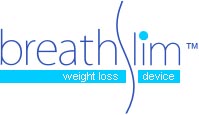According to a recent study released today, individuals with breathing problems, risk of asthma, and their prevalence in individuals whose weight exceeds healthy levels, is on-average 50 percent higher than those maintaining a healthy weight. The study, conducted in collaboration with The Laboratory of the Functional Reserves of the Human Body, Institute of Physiology of the Russian Science Academy, and Innovative Technologies Dept. and commissioned by BreathSlim, Inc., showed that respiration training had a significant impact on metabolism and an individuals ability to lose weight.
The results of the study, particularly those illustrating positive impact to Body Mass Index (BMI), corroborate BreathSlim’s decision to announce the launch of the new BreathSlim a weight loss system designed to modify the body’s traditional breathing cycle, expanding capacity through resistance training. Researchers observed that the average person utilizes 20 percent of oxygen upon inhalation. Training the respiratory system to increase oxygen absorption capacity through adaption of the body’s anti-hypoxia mechanisms, which include metabolism, ultimately contribute to increased weight loss.
“It’s never been easier to achieve a healthy lifestyle through reducing and maintaining a healthy weight. As our most recent study reveals the previously uncorrelated link between weight loss and everyday breathing is actually quite significant,†said Albert Shumoff, chief operating officer and global vice-president. “Moreover, BreathSlim is quick to implement and provides individuals with the methodology and lifestyle changes available today to improve their health and quality of life.â€
Survey Key Findings
• 4 percent increase in oxygen absorption
• 3-5 percent improvement in BMI and 4.4-5.1 percent improvement in body fat
Survey Methodology
The study was conducted using volunteers in a three-phase breathing experiment utilizing the original form of equipment. The first phase used breathing through the nose, the second phase used pauses after inhalation, and the third phase used exhalation through the mouth with resistance. Each phase utilized varying combinations of time elapsed pre/post breathing cycle as well as water resistance. Observations were performed with subjects at a state of rest and collected in real-time, post one-month use, and post three-months. Observation methods used include anthropometry (e.g. measurements of height, weight, % of body fat, body mass index, control of blood pressure, heart rate) and spirography gas analyzer Oxyon-Pro Jaeger (e.g. breath volume, speed characteristics of breath, total gas analysis).
Via EPR Network
More Healthcare press releases

